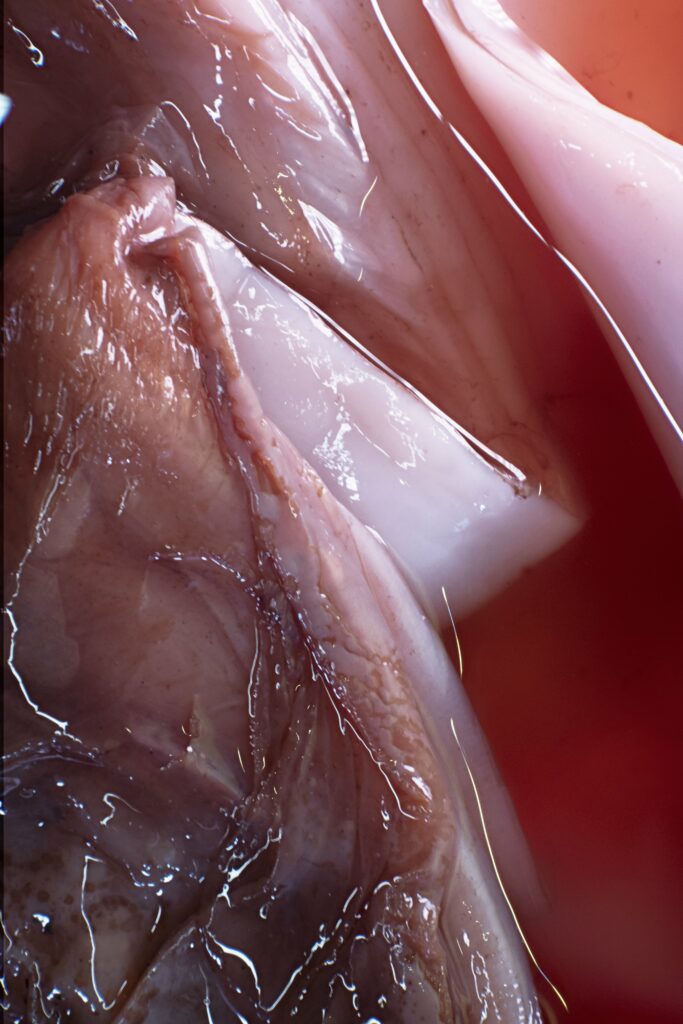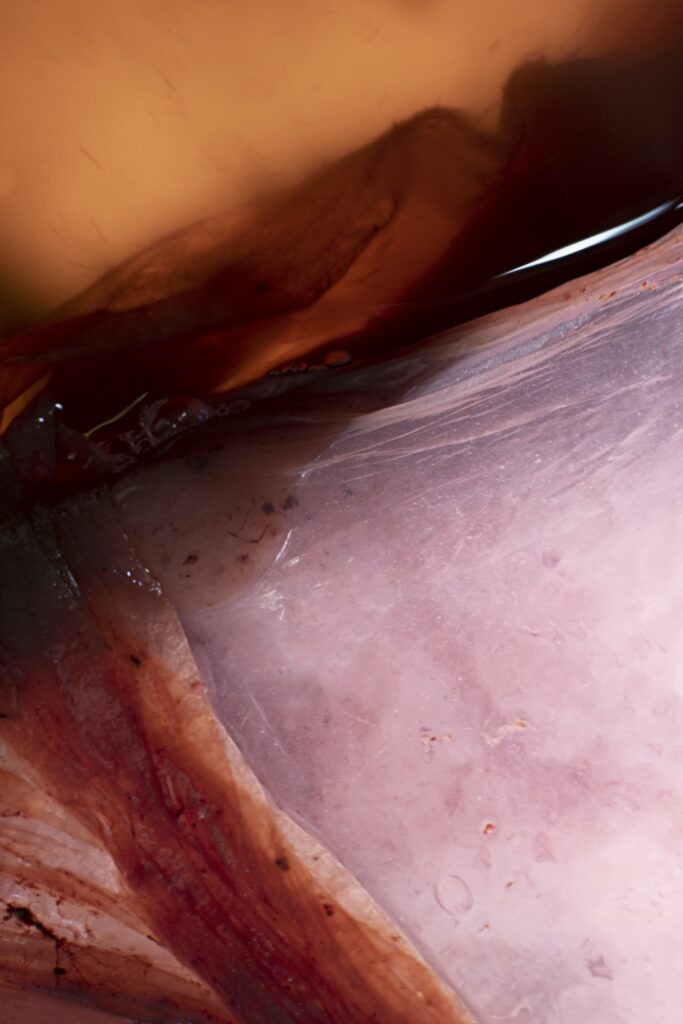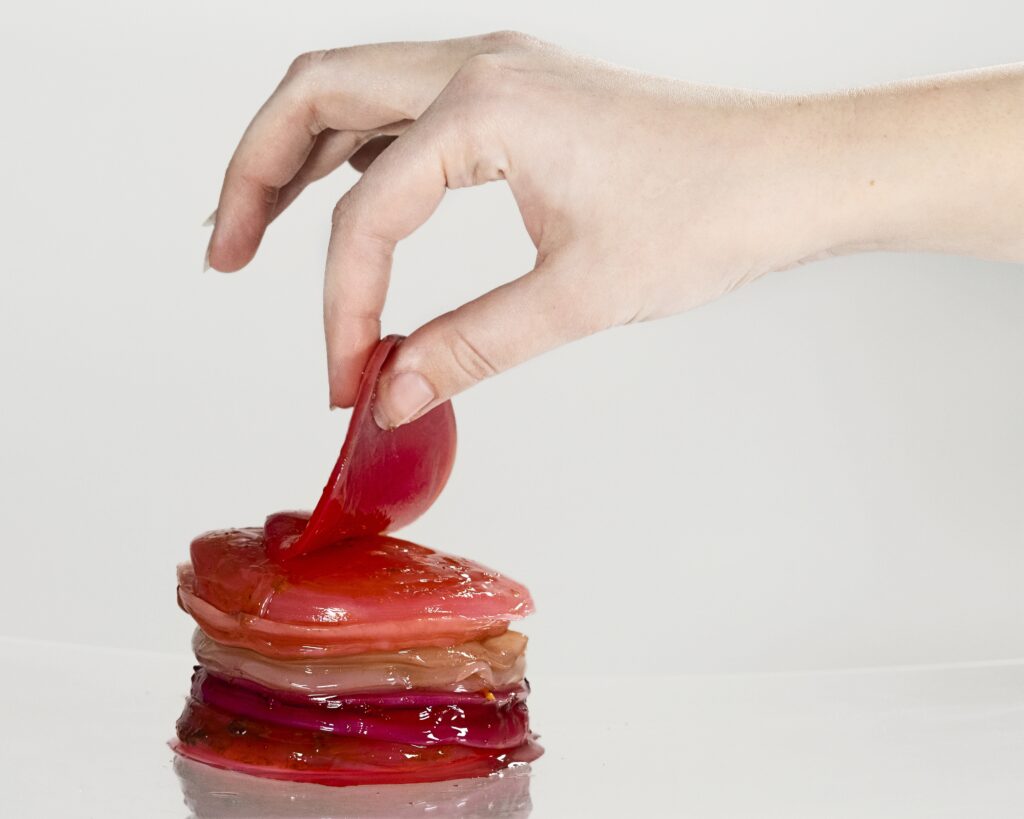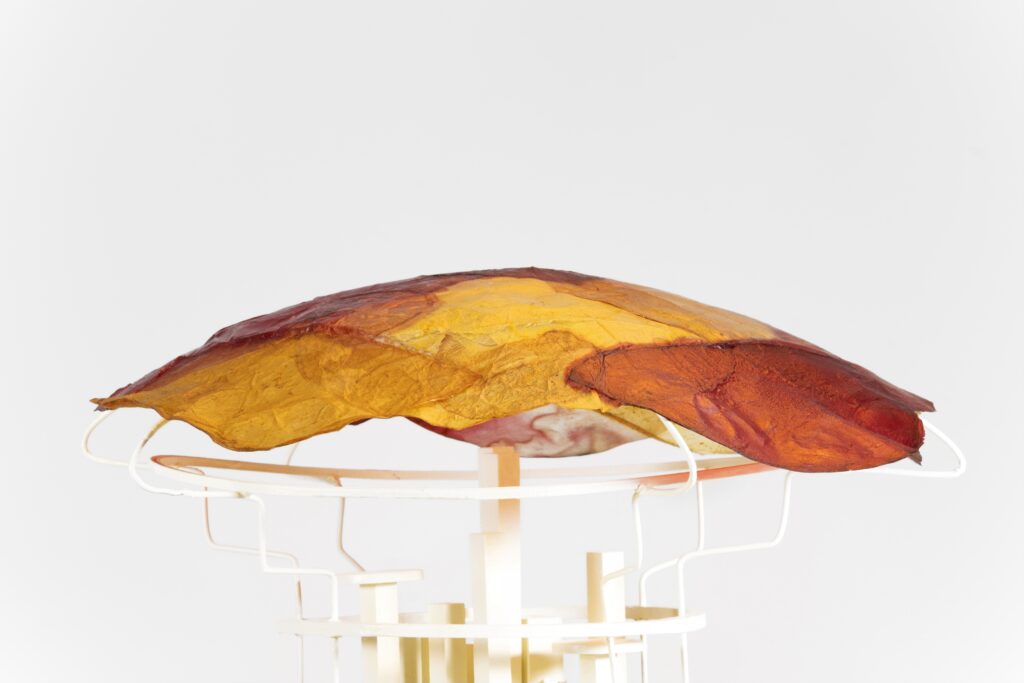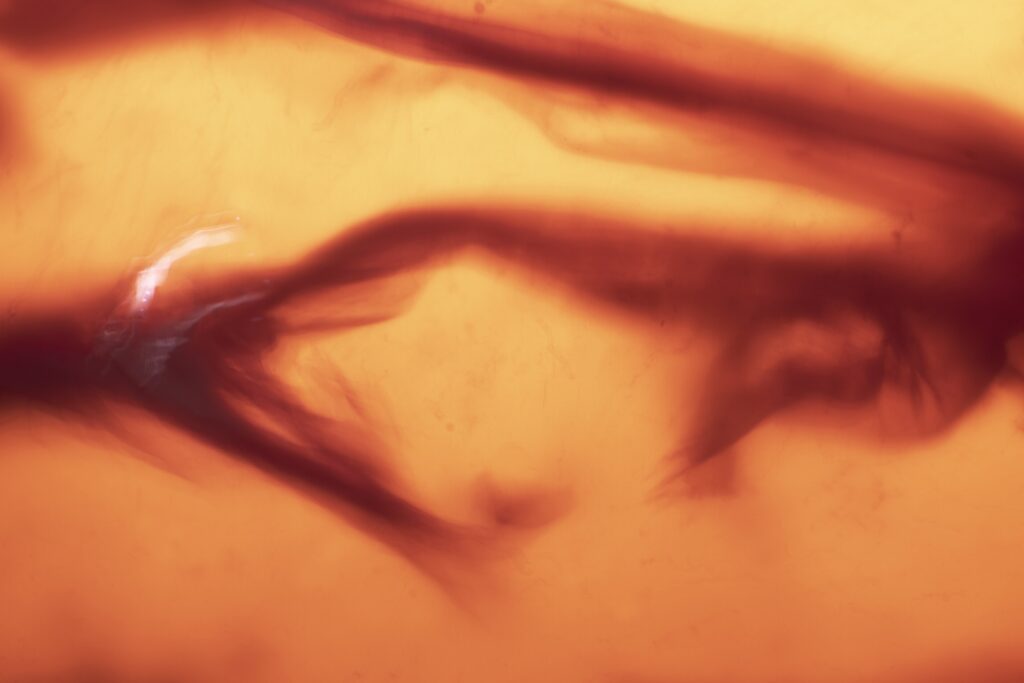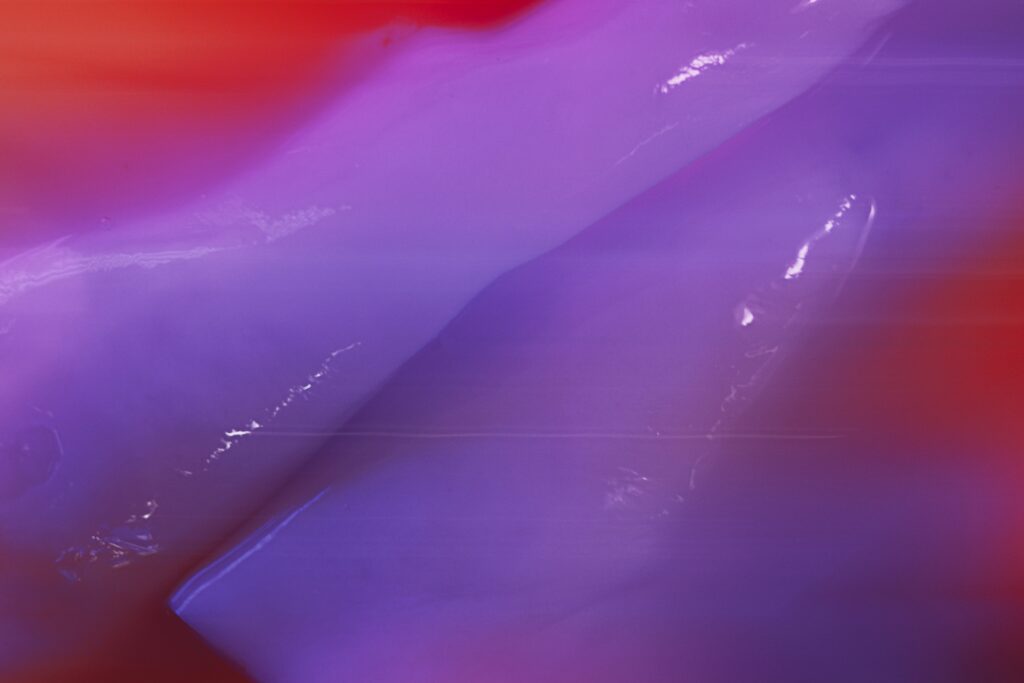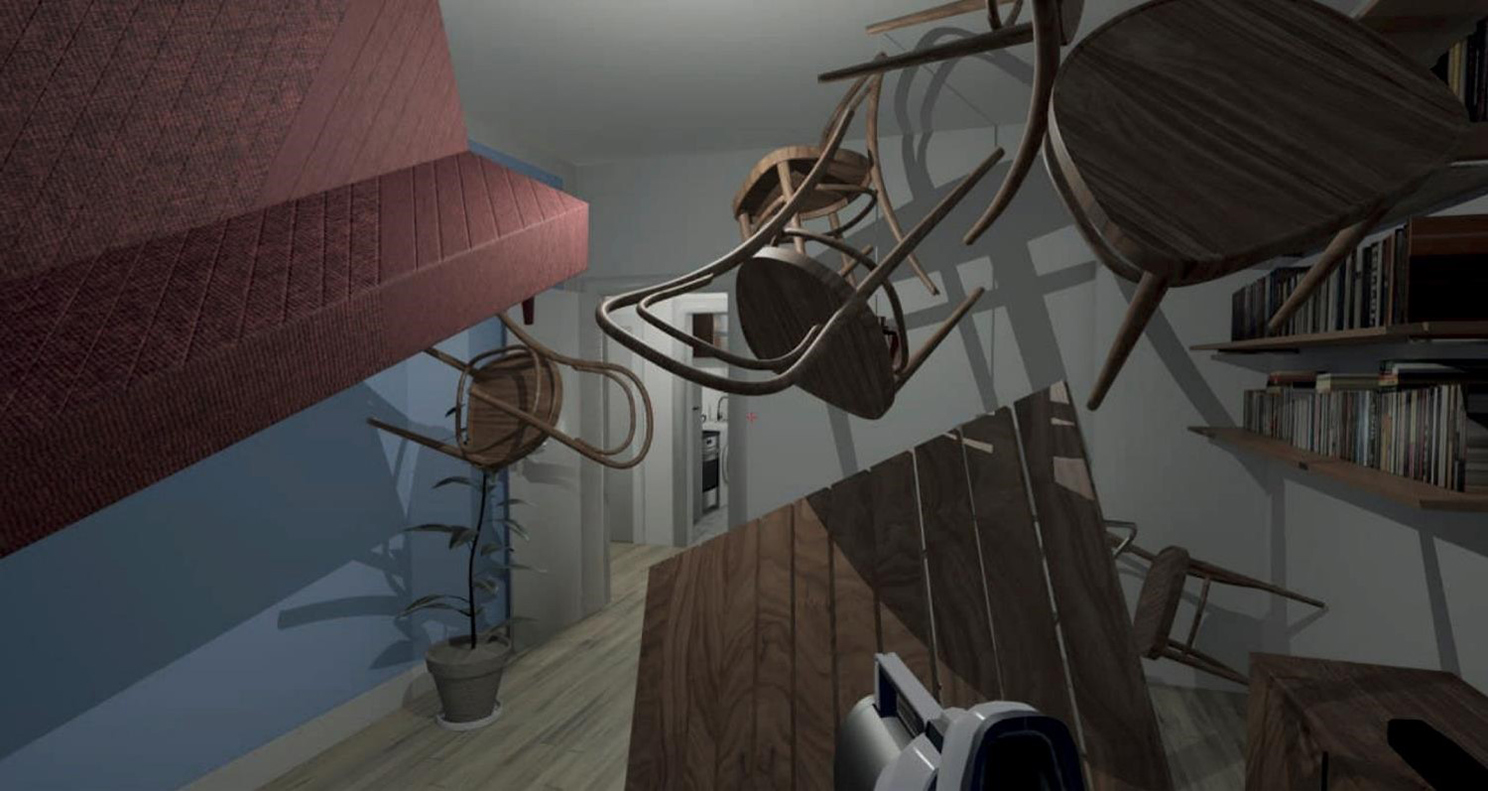Textil- und Flächendesign
Deutsch
English
WOMD, WS 20/21
SCENARIO
The reality of the future, the now-situation.
Lived some hundred years and still cannot imagine what it must have been like, living across the entirety of this planet’s surface. From what I have seen of the past, col- ours and shapes were bountifully present. Living creatures were inhabitants of forests, grasslands and mountains. Now, all the land masses resemble cracked skin with dust flowing along its vast plains. On other patches, the body of waters go beyond eyesight. Back then there were changing temperatures and weather patterns, seasons. Now there are two. Most of the time a scorch- ing sun, shining down on us. Besides that it rains quite infrequently. How did we get from such a versatile surrounding to this? It did not all happen at once. Way back when we were still able to roam the diverse unknown of the ecosystem, there were people (scientists) who found that the drastic change in climate was due to humans sourcing energy, food and materials through agriculture, using/objectifying earth as a cabinet for all needs. They warned of the irreversible consequences that unstable weather patterns would have. Especially if people from wealthier land patches, called ‘countries’ would continue sourcing from/exploiting unjustly treated land patches.
Oh yeah, back then the currency was money, either in the form of paper or metal coins; throughout the centuries
it turned into digital currency. Nonetheless we do not have such exchange values here as there are no more sources to trade. Survival was only possible with a change of system, shifting from individual/group possessiveness to communal cultivation.
Consequently in this day and age the entire metropolises subside on risen platforms where people/we live in con- joined high rises, connected through bridges, platforms and walk ways. Everything ought to be connected as it is the only place we (can) reside. Researchers longingly test the surrounding land to see if minerals will revive. However, the outlook for settling on the planet’s actual surface again seems beyond my aging.
So for the time being we stay on these platforms, living within our self-sufficient ecosystems. Facilitated by a dome-shaped membrane which lowers the sun’s intensity, intercepts rainwater and tints the micro-atmosphere. It consists of dried cultures of bacteria and yeast, going by the name of SCoBY.
CONCEPT
When referring to -a- SCoBY, what is meant is a jelly-like surface formed during the fermentation process of Kombucha brewing. The word SCoBY is an abbreviation for symbiotic cultures of bacteria and yeast. The material is created in an environment with sufficient oxygen levels and temperatures varying between 20–30 degrees.
These are the required conditions for yeast to ferment glucose from sugars into ethanol and carbon dioxide. This alone does not create the desired biofilm matt yet, though. In addition, Acetobacter bacteria are needed to oxidise the resulting ethanol to organic acids, especially lactic and acetic acid. The bacterium is also responsible for bringing together glucose molecules that form stable fibrils.
After 7–10 days of the bacteria, yeasts and acids coexisting in fermentation, the fibrils form a dense microbial mat. The shape of the mat varies depending on what container the batch is brewed in. Likewise the color of the mat can be influenced through adding organic dye. Once it has reached a thickness of approximately 1–2 cm in the growing state, it can be removed from the container and dried. Thus resulting in a multi-adaptive membrane. In closure, SCoBY is not only a versatile material, it is the basis for a self-sufficient material cycle, that shifts the focus from taking resources to living with and making them.
